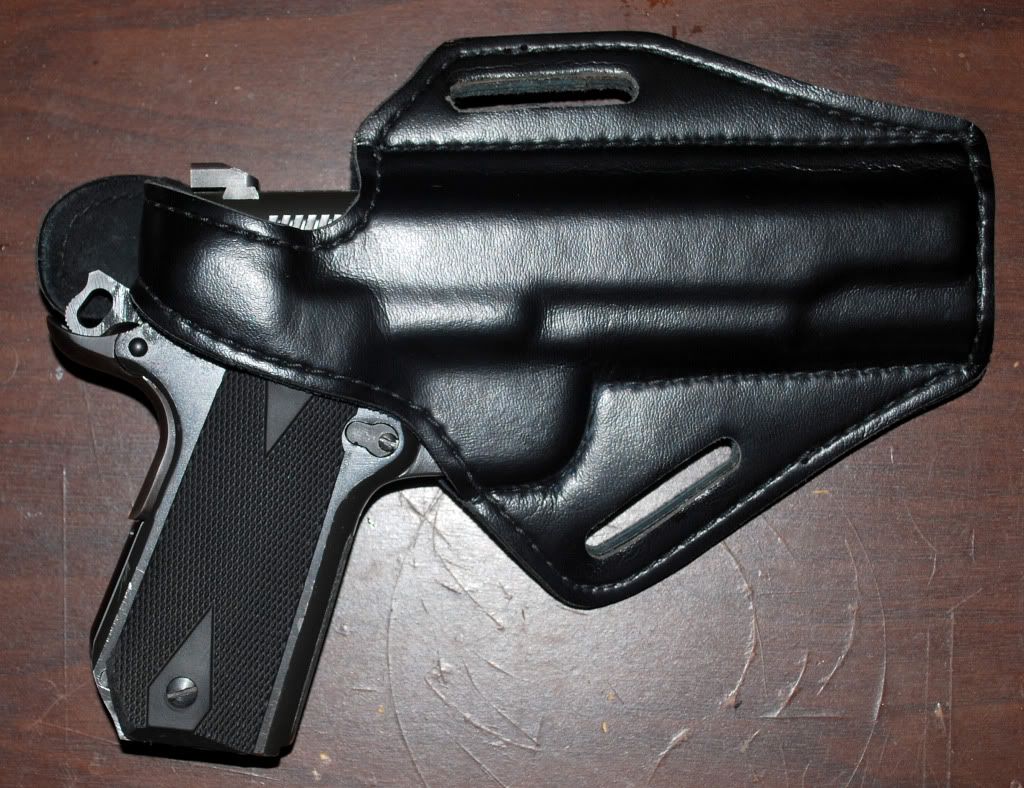I think I've screwed up the courage to do my own bobtail. I bought a cheap(ish) 1911 to use a project/learner gun. The 1911 is a Griffon and has a forged slide and frame. I've already detail stripped it a couple times, and replace several parts (including the trigger) and done some shaping on the thumb safety. I think I'm up to doing the bobtail myself. My only real hesitation comes in drilling the new hole for the MSH pin. I'm going to buy the Ed Brown jig. This sounds like a stupid question, but how does the jig work? I've found lots of tales of DIY bobtails, with pictures in progress, but none show the drilling of the hole! The jig looks like it has a hole to match to the existing hole, and another hole where the new hole needs to go. I assume this will sit on top of the frame... are you meant to run the bit through the hole of the jig, or just use it to mark on the frame? I'd really like to know how the jig is meant to work before I drop the cash on one. Any insight would be greatly appreciated.
Part 2 of this question: If you have done the bobtail yourself, did you remove the grip screw bushings to drill the new hole? I know that will make it easier to lay the frame flat on the drill press, but the bushings are very well staked in - I'm thinking I'd have to use a dremel to get them out. I'm think about taking a piece of wood and drilling holes to match the bushings so I can mount the frame on my drill press.
I've already purchased a piece of flat bar stock steel. I'm going to build a frame analogue to practice on this weekend before I take the plunge.
So...anyone got some advice?
Thanks in advance!
Part 2 of this question: If you have done the bobtail yourself, did you remove the grip screw bushings to drill the new hole? I know that will make it easier to lay the frame flat on the drill press, but the bushings are very well staked in - I'm thinking I'd have to use a dremel to get them out. I'm think about taking a piece of wood and drilling holes to match the bushings so I can mount the frame on my drill press.
I've already purchased a piece of flat bar stock steel. I'm going to build a frame analogue to practice on this weekend before I take the plunge.
So...anyone got some advice?
Thanks in advance!















